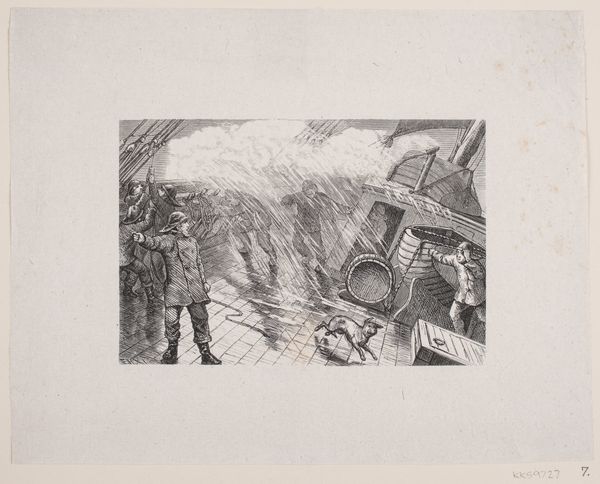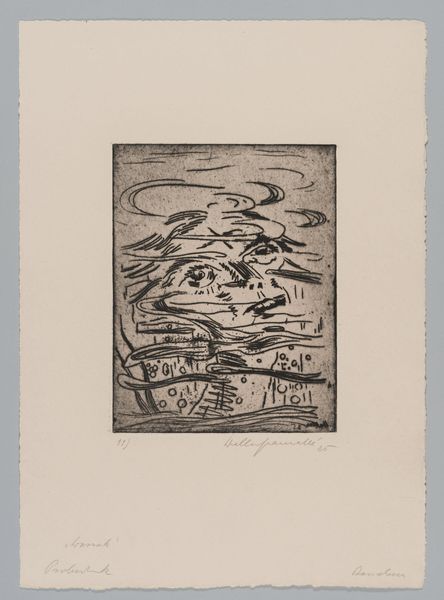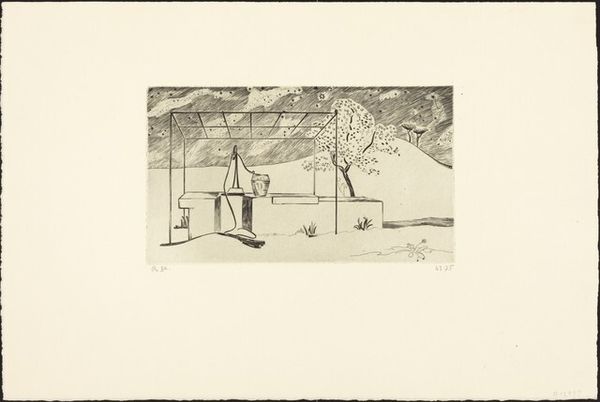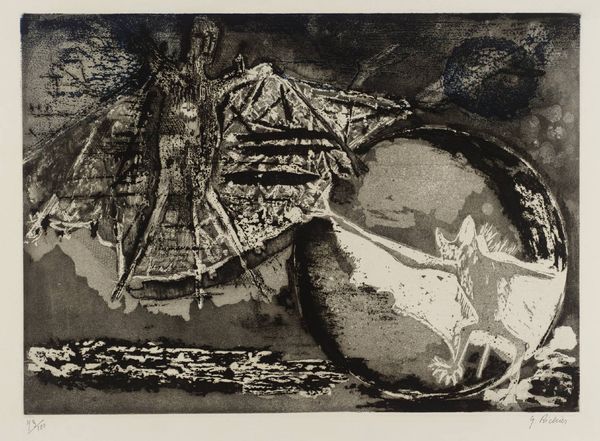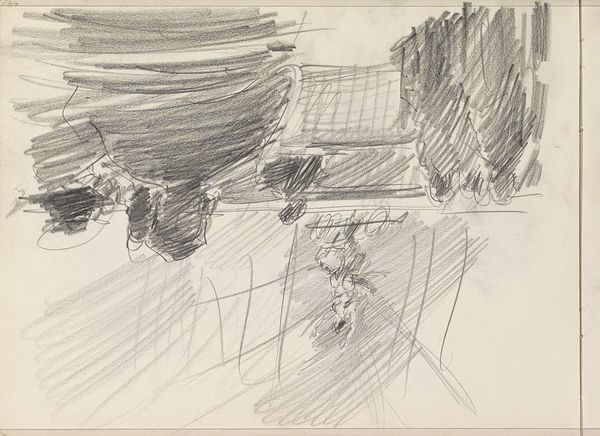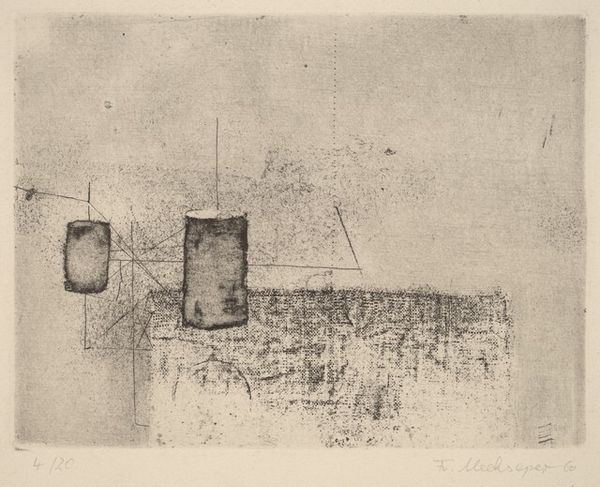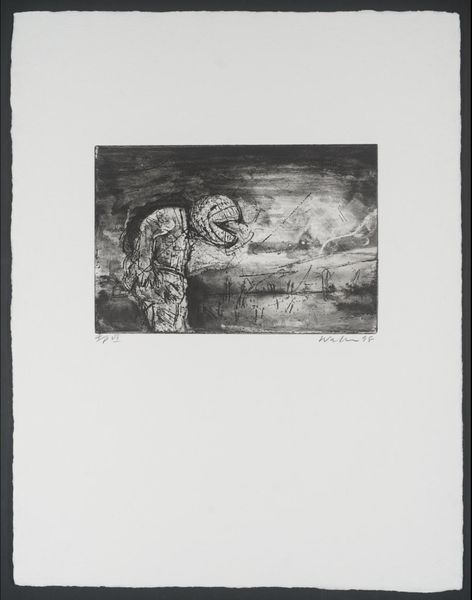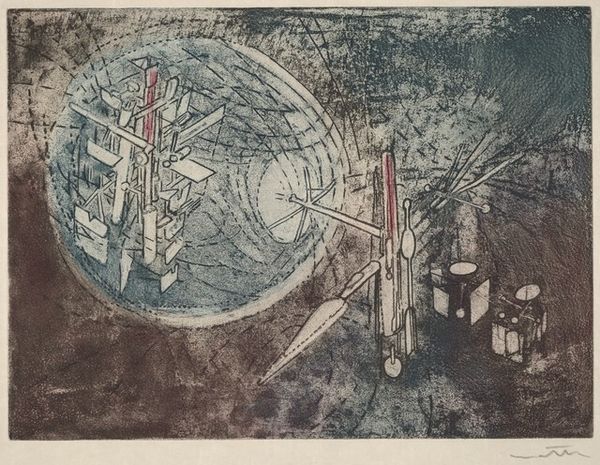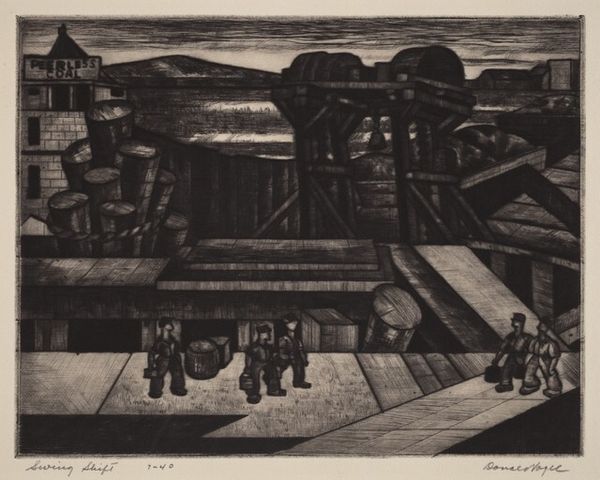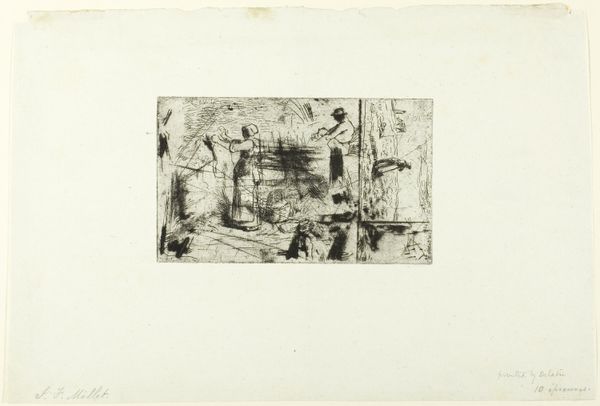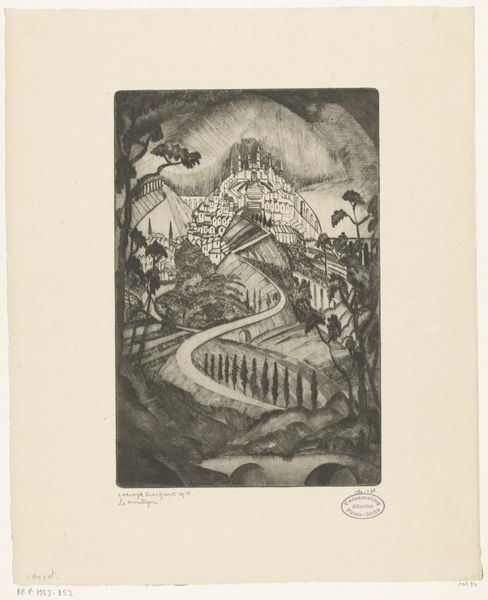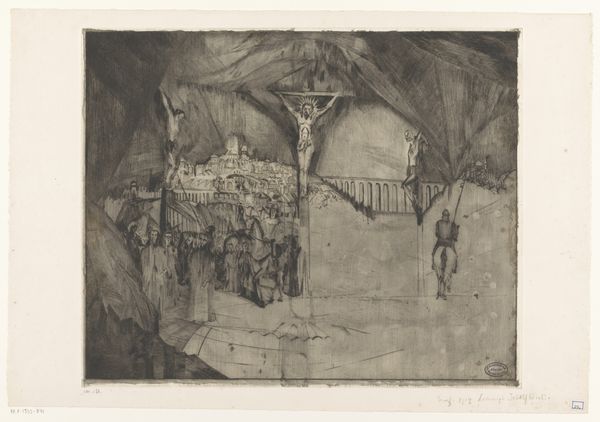
Illustration til H. C. Andersen: "Snedronningen" 1864 - 1944
0:00
0:00
Dimensions: 125 mm (height) x 157 mm (width) (bladmaal)
Curator: This illustration, a pencil drawing dating from between 1864 and 1944, comes to us from Henrik Arnold Hamilkar Sørensen. It is entitled "Illustration til H. C. Andersen: "Snedronningen"", referring, of course, to Hans Christian Andersen’s "The Snow Queen." Editor: My first impression is the chilling isolation of it all. These children huddling together on what seems like a precarious throne on a frozen expanse. It looks haunting. Curator: Indeed. Sørensen’s print powerfully encapsulates the romantic fascination with nature, especially the sublime terror it can inspire. Consider the tradition of landscape painting, and how this image builds upon it through figuration to evoke that sensation. The Northern Lights writhe in the sky. Editor: That sublime terror, yes, and it speaks to me about vulnerability. I read this image through the lens of the children’s story; two children trapped in a power struggle neither of them fully grasps. What comment might Sørensen be making about innocence confronted by brutal, structural forces? The bench resembles a stage. Curator: It certainly creates a theatrical atmosphere, doesn’t it? Think about the broader societal obsession with fairytales at this time. Beyond simple moral tales, these stories often became vehicles for exploring the anxieties and aspirations of a rapidly changing society. This depiction highlights themes of resilience and transformation. Editor: I'm also wondering about what a scene set entirely in an icy landscape tells us about access, literally the ability to move about that landscape, and metaphorically the way access operates between the ruling class and the proletariat. Who gets frozen out? What bodies are valued and protected? Curator: An excellent point, given Andersen's own stories of social mobility. One could also examine the role of the museum itself in exhibiting such works. To what extent does it preserve or perhaps inadvertently alter their meaning within a contemporary context? How does this piece function when placed into the modern spectacle? Editor: Precisely! So many interpretations here, which demonstrates that in examining older art through a modern, more equitable lens, new insights arise that spark very important conversations about art’s continuing relationship with history and contemporary society. Curator: Yes, indeed. This piece truly exemplifies how art continues to engage us. Thank you for these critical insights.
Comments
No comments
Be the first to comment and join the conversation on the ultimate creative platform.

